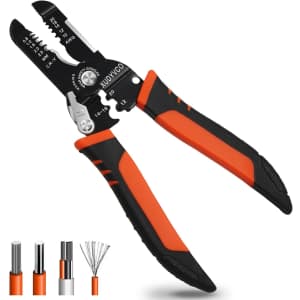
Save on cables, USBs, small portable speakers, tools & accessories, and more. We've pictured this 5-in-1 Wire Stripper Crimping Tool for $4.27 Buy Now at Amazon

Shop the Cyer Week special offers at Uniqlo. You will find deals on men's, women's, and kids' T-shirts, jackets, coats, and more. Opt for in-store pickup (where available) to dodge the $7.99 shipping fee, or get free shipping with orders of $99 or more. Buy Now at Uniqlo

It's the best price we could find by at least $27 and a great deal for Columbia men's pants in general. Buy Now at Amazon
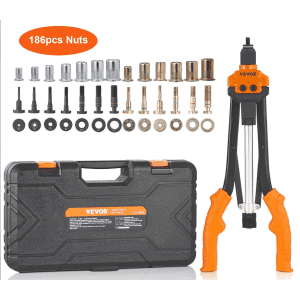
Prices start as low as $9 during the Cyber Monday Deals at Vevor. You will find deals on hand tools, automotive items, garden tools, and much more. For most items, you will have to create a free account to get the best price and to get free shipping, although if you live in a particular rural area, you may have to pay for shipping. Buy Now at VEVOR
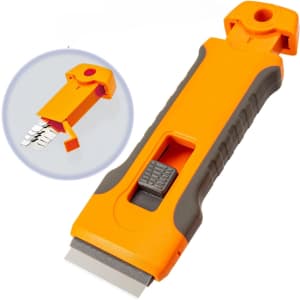
Get deals on a selection of cheap clearance items in this Amazon Haul Sale. Everything is priced under $5. Shipping is free on Amazon Haul orders of $25 or more. Buy Now at Amazon

Take 50% off in Light Wood. Other colors are available from a buck more. Buy Now at Amazon
- pillow cushion
- for 15.6" laptops

They're 63% off and a great price for adidas shoes. We've pictured the Cloud White/Core Black/Grey One option at this price. Buy Now at eBay

This selection includes several models of "Grade A" refurbished Apple iPhones and Smart Watches. You can get an Apple Watch Series 5 for as low as $80, while the iPhone XR starts at $120 and iPhone 14 at $280. These all come with at least a 1-year Woot limited warranty. Buy Now at Woot! An Amazon Company

Apply the promo code "OFF15" to get the lowest price we could find by $9. adidas adiClub members get free shipping. (It's free to join.) Buy Now at adidas

New customers can sign up and get five years of 1 Gbps internet for $50/mo for a full five years. Plus, you'll get a Peacock Premium subscription for free for two years - a savings of $10.99/mo. Some requirements apply, such as signing up for paperless billing and automatic payments. Buy Now at Xfinity Residential

Apply promo code "DYSONHOLIDAY" to save an extra $38. It comes backed by a 2-year Allstate warranty. Buy Now at eBay
- HEPA filter
- remote control
- Model: 545870-02

Prime members only can apply coupon code "PK69FS4X" to take 50% off. Buy Now at Amazon
- 24”x33” full-coverage wrap for neck, shoulders, upper back, and waist
- 6 heat settings (104°F–149°F) with 4 timers (1/2/4/6 hours) plus auto shut-off

That's $4 under our mention from last week, and the best price we've seen. A one-year Allstate warranty is provided with purchase. Buy Now at eBay
- Qualcomm Snapdragon 8 Gen 3 processor
- 6.8” Dynamic AMOLED 2X HD+ display
- Galaxy AI
- 12GB RAM
- Up to 200MP camera zoom
- Model: SM-S928UZKFXAA


These are at least $8 at Amazon.
Import & processing fees add an additional $1. New Alibaba customers get free shipping; otherwise it starts around $6. Buy Now at Alibaba

Add two to your cart to get this price, which is around $13 less than the best price we could find at Amazon.
Import & processing fees add an additional $2. New Alibaba customers get free shipping; otherwise it starts around $17. Buy Now at Alibaba

That's the best price we've seen and $16 less than our previous mention. Buy Now at Amazon
- compatible with iOS and Android
- Model: RE-60014

Apply coupon code "46BR444C" for a savings of $20. Buy Now at Amazon
- Includes pinecones and red berries
- 9 ft garland with 16.4 ft ribbon
- 50 LED lights, battery-powered
- Flexible wire for shaping
- Durable and reusable design

Want to bring old, blurry, low-quality videos and photos back to life in just one click? WinXVideo AI is built for that. For a limited time, Digiarty is offering a lifetime license for only $39.95 (was $89.95). With advanced AI, WinXVideo AI restores, upscales, stabilizes, enhances faces, converts, compresses, and edits footage smoothly — including 4K/8K/HDR. Its clean interface makes it easy for anyone to use, no learning curve needed. Upgrade your memories to cinema-level clarity. Don't miss out — get your lifetime license today at Digiarty. Buy Now at WinXDVD
- AI Video Enhancer: Transform old, blurry, pixelated footage to 1080p / 4K; stabilize shaky GoPro/drone/phone clips; boost frame rate up to 480 fps for ultra-smooth slow motion.
- AI image enhance: Upscale photos and AI art to 4K/8K/10K for clean printing and sharing; fix grain, noise, blur, and aging
- Restore faces and colorize black & white photos with AI.
- Remove background noise from audio & video files with AI.
- Convert any video and music to 420+ formats. GPU accelerated.
- Compress 4K and large videos by making them up to 90% smaller without quality loss.
- Record tutorials, gameplay videos, online courses, etc., from screen, webcam, or both.
- Download: save 4K/1080p video, music, playlists, channels, m3u8, etc., from 1,000+ sites.
- Edit video: cut, crop, merge, flip, rotate video; add effects/watermarks/subtitles, make GIFs, etc.

That's the best price we could find by $32. Buy Now at Amazon
- makes hot and iced drinks
- automatic shut off
- 40-oz. water tank
- Model: BNV420GRY1BUC1

That's the best price we found by at least $9. Available at this price in Black. Buy Now at Amazon
- 55" W x 24" H
- flexible 60/40 split design
- Model: CASC2288_RA


That's the lowest price we could find by $28. They are in Cloud White/Legacy Teal at this price. Buy Now at eBay


That's $30 off and the lowest price it's ever been. Available in several colors (Sea Salt pictured). Buy Now at Amazon
- Air Fry, Broil, Roast, Dehydrate, Bake, Reheat
- dishwasher-safe, non-stick air fryer basket
- overheat protection and auto shutoff
- Model: 140-3232-01B
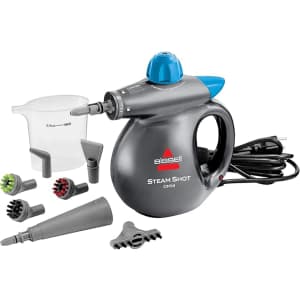
That's $6 below Bissell's direct price. Buy Now at Amazon
- 7 tools
- ready in 3 minutes
- 3 color-coded round bristle brushes

Apply promo code "OFF15" to pay $88 less than other stores charge for this color. adidas adiClub members get free shipping. (It's free to join.) They are in Dash Grey / Purple Burst / Lime Burst at this price. Buy Now at adidas
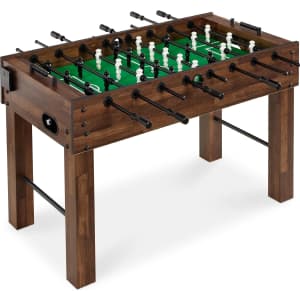

Get five years of membership for just $11 per year as part of AARP's Black Friday deal. The AARP Membership gives you access to discounts, programs, and services from trusted brands. This deal's available until December 9. Buy Now at Aarp Services Inc


Apply coupon code "RMNXYLGK" for a savings of $8. Buy Now at Amazon
- 24 fishing lures for countdown
- Lures suitable for all waters
- Includes crankbaits and soft plastics

It's the best price we found by $10. Buy Now at Amazon
- 5 cup sizes
- create more than 30 coffees
- Model: ENV92LE

That's $199 less than you'd pay in factory sealed condition. This is an open box item that comes with original packaging (may be slightly distressed), and includes original accessories. A one-year Allstate warranty applies with purchase. Buy Now at eBay
- active noise cancellation
- transparency mode
- on-head detection
- smart case
- USB-C charging
- Model: MWW43AM/A

It's the lowest price we've seen and the best we found now by $17. Buy Now at Woot! An Amazon Company
- 1200W max suction
- 3.5L capacity
- 100,000 RPM motor
- Floor Nozzle, Crevice Nozzle, Pet PowerMate Attachment, Small Dust Brush, Upholstery Brush
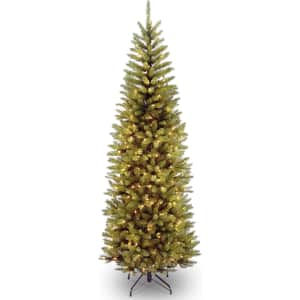
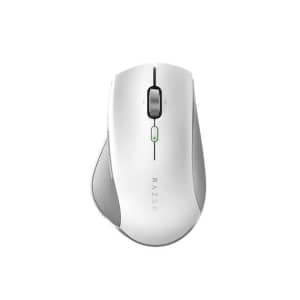
It's the best price we found by $10. Buy Now at Woot! An Amazon Company
- 5G Advanced Optical Sensor
- Multi-Host Connectivity
- 8 Programmable Buttons
- Extended Battery Life of up to 400 Hours

That's a savings of $44. Buy Now at Walmart
- 150-PSI max pressure and 17L/min airflow
- 4000mAh rechargeable battery
- dual-screen display
- 4 preset inflation modes (Car, Motorcycle, Bicycle, Ball)
- four pressure units (PSI, Bar, kPa, kg/cm)
- several tools in one: tire inflator, wireless power bank, LED emergency light, and real-time tire pressure monitor
- includes ball needle, air nozzle, sealing rings, high-pressure air inflation tube, charging cable, French valve, and storage bag

Apply promo code "SPENDANDSAVE" to get the best price we've seen, and the lowest price we could find today by $15. Buy Now at eBay

Eco-Worthy US via eBay offers the Eco-Worthy 30.72kWh 48V 100AH Server Rack Lithium Battery 6-Pack with Monitor for $4,679.99 (reduced from $5,179.99) with free shipping. Buy Now at eBay
- wireless connectivity and smart monitoring
- fits standard 3U cabinets
- durable full-metal shell and a 100A BMS that provides multiple layers of protection

It's the best price we found by $38. Buy Now at Amazon
- 5 Adjustable Guitar Hangers
- includes mounting kit
- rotating arms
- Model: PGST56.6
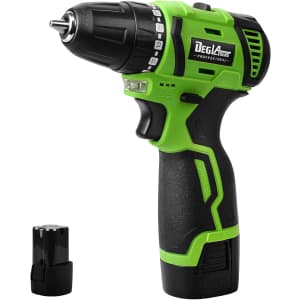
Apply coupon code "4YAAA4FC" for a savings of $23. (Of note, the clip coupon on the product page does not stack with the code, which offers the larger discount.) Buy Now at Amazon
- 20+1 torque settings
- 2-speed options
- Includes LED light for visibility

Subscribe for around $7 less than you'd pay at Target. Buy Now at Amazon
- Special collection of classic InkJoy Gel Pens, InkJoy Gel Bright! Pens, and InkJoy Gel Metallic Pens

That's $60 under our mention from two months ago, and the best price we've seen. It's also $632 less than you'd pay at other stores today. Buy Now at Woot! An Amazon Company
- Dolby Atmos
- works w/ Alexa, Googlecast, Airplay 2, and more
- Model: HW-Q990F
How Much Can I Save on the Hottest Deals?
The average savings can vary wildly day by day, but we regularly see discounts of anywhere from 15% to 96% off. The biggest discounts usually pop up for holidays, such as these Early Prime Day Deals. Thanks to coupon codes giving extra discounts, we'll regularly see shoes and apparel from the biggest brands like Nike, adidas, and New Balance at over 50% off. If you're looking for tools or home improvement, we see deals from stores like Home Depot and Lowe's that take up to 70% off. Plus, if something's at its best-ever price, or close to it, or is just something we think is extra neat, you'll probably find it on our Staff Picks page.
How Often Are the Hottest Deals Updated?
Around the clock! An international team of highly-trained deal jockeys is constantly scouring Amazon, Walmart, Best Buy, Target, and any other store you care to name, seeking out the latest and greatest deals for you to peruse. From daily deals and doorbusters to niche finds and off-the-wall offers, our pages are always being updated with something new and interesting and discounted.
